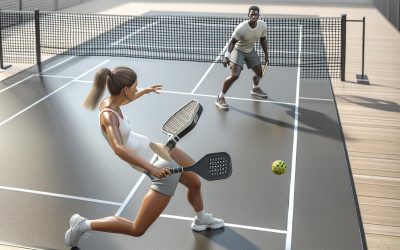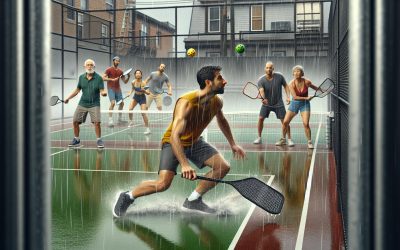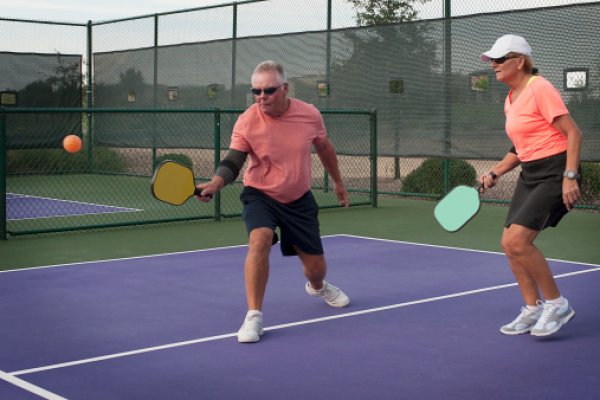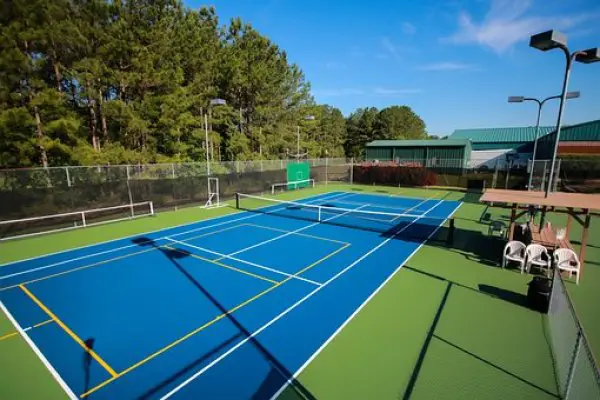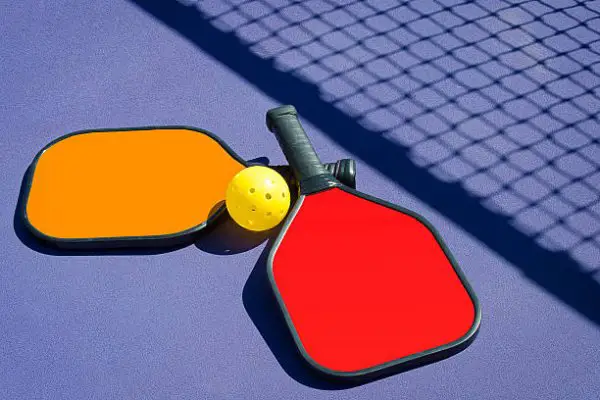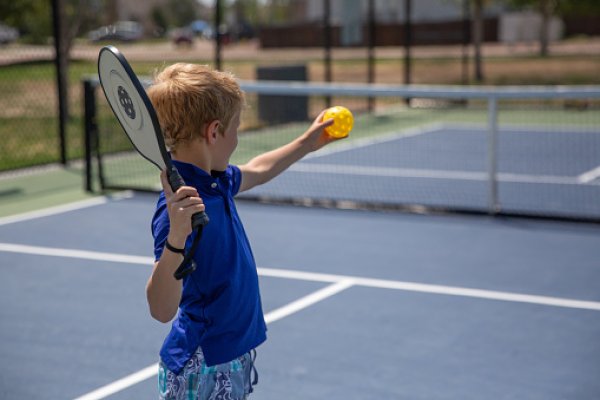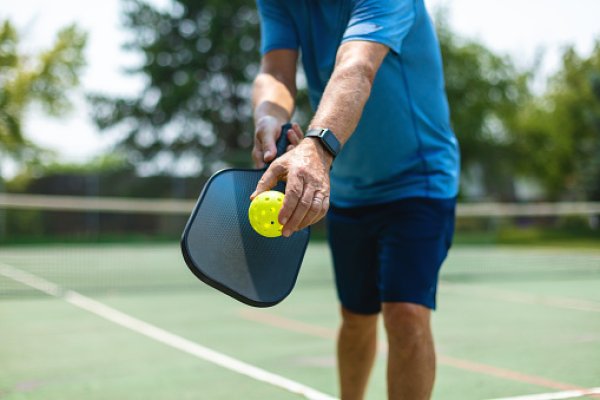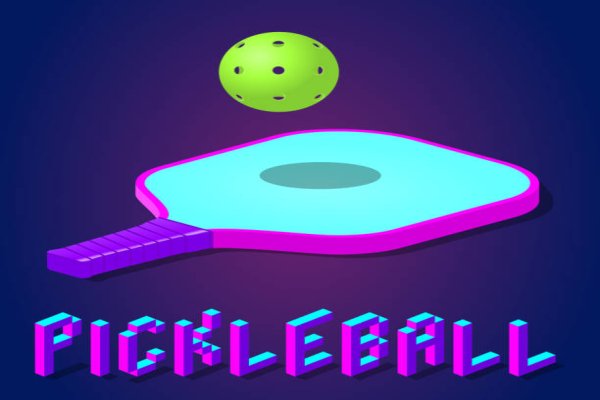PICKLEBALL FOR ALL
Unleash the Fun, Master the Game Serving Smiles on the Pickleball Court!

Invented
Players
Avg Time Played
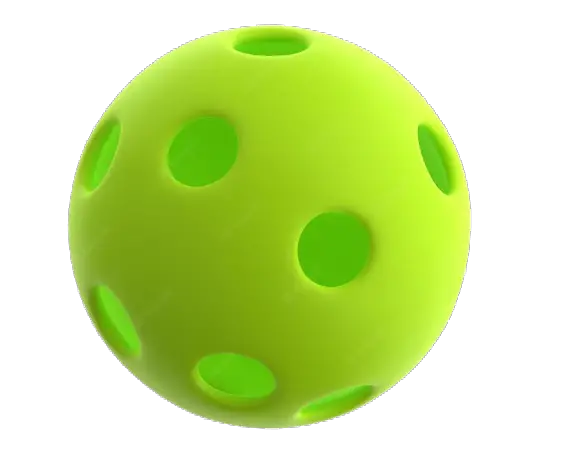

Pickleball 101
Court Size
Pickleball is often described as a more accessible and beginner-friendly alternative to tennis due to its smaller court size and slower ball speed.
Rules
Once the ball is served, both teams must let it bounce once on their side before volleys (hitting the ball in the air) are allowed.
The Game
The game starts with an underhand serve, and the serving team must keep at least one foot behind the backline until the serve is made.
Rules
After the two bounces (one on each side) during the serve, the ball can be played either on the bounce or volleyed as desired.
See Our Latest Posts
Mastering Pickleball: Tips & Drills for Switching Sides Correctly
Learn the art of switching sides in pickleball with our expert guide. Discover essential drills like Shadow Switch, Ball Toss Switch, and Live Ball to sharpen your skills in communication, speed, and anticipation. Transform your game today!
Mastering Fair Play: Understanding Pickleball’s Interference & Distraction Rules
Explore the essentials of pickleball’s interference and distraction rules to maintain fair play. This guide offers strategies for fostering sportsmanship, clear communication, and tips for an enjoyable game environment, emphasizing respect and responsibility.
Master Pickleball: Tips to Avoid Serving Faults & Boost Your Game
Discover essential strategies for flawless pickleball serving, from mental preparation and technique refinement to purposeful practice methods like target drills and video analysis. Learn how a consistent pre-serve routine can elevate your game.
Mastering Pickleball: Rules on Timeouts & Breaks for Winning Matches
Discover the critical rules of pickleball on timeouts and breaks, and learn how they’re more than just pauses—strategically used, they can shift momentum, offer recovery, and provide tactical advantages. Essential reading for enhancing your game.
Mastering Side Out Scoring in Pickleball: A Strategic Guide
Dive into the intricacies of pickleball’s side out scoring with our guide. Learn the importance of serving, shot placement, team coordination in doubles, adaptability, and mental toughness to excel in the game. Perfect your strategy for success!
Weather’s Role in Pickleball: How Players Adapt to Rule the Game
Discover how pickleball players adjust their strategies to tackle varying weather conditions, ensuring fair play and competitiveness. Learn the importance of adapting shots, footwork, and communication to enhance gameplay in different climates, from windy and rainy conditions to extreme temperatures.
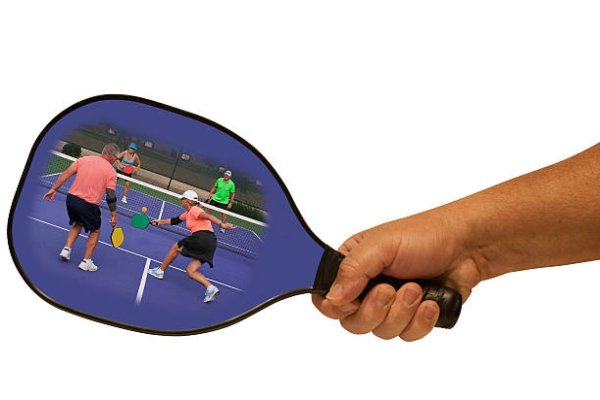
Pickleball Game Facts:
Pickleball is often described as a more accessible and beginner-friendly alternative to tennis due to its smaller court size and slower ball speed.
The game starts with an underhand serve, and the serving team must keep at least one foot behind the backline until the serve is made.
Once the ball is served, both teams must let it bounce once on their side before volleys (hitting the ball in the air) are allowed.
After the two bounces (one on each side) during the serve, the ball can be played either on the bounce or volleyed as desired.
The ball must stay in play and not go out of bounds or touch the non-volley zone (the kitchen) during the rally.
Players can score points only when serving, and if they win the rally, they get to retain the serve for the next point.
Team Size:
Pickleball can be played in singles or doubles format. In singles, it’s a one-on-one game, while doubles involves two players on each team.
Doubles is the most popular format of the game, and it’s often preferred due to its social and team-oriented nature.
A standard pickleball match consists of two teams, each with two players, playing against each other.
The two players on a team work together to cover the court and strategize during the match.
Time Played:
The duration of a pickleball match can vary based on factors such as skill level, game format (singles or doubles), and the scoring system used.
Generally, a pickleball game played to 11 points may take around 15 to 30 minutes to complete.
Competitive matches, especially at higher levels, can last longer, ranging from 30 minutes to an hour or more.
Some tournaments and events may have time limits for matches, ensuring the smooth progression of the overall competition.
Pickleball’s relatively short duration makes it an attractive sport for players who want to get some exercise and have fun without committing to long matches.
It’s worth noting that the duration of a pickleball match can vary widely based on individual playing styles, the pace of the game, and other external factors. As with any sport, the actual time played can be influenced by various circumstances.
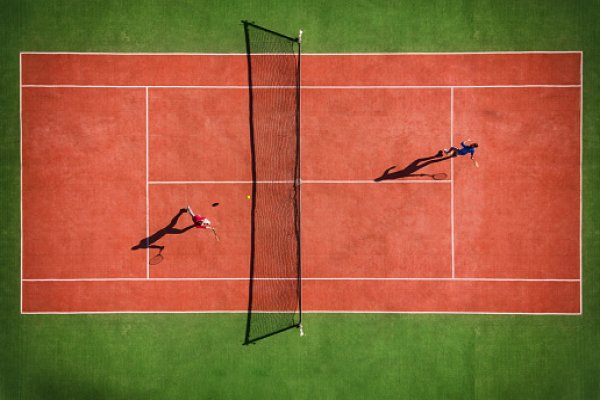
Get in touch (and in shape)


